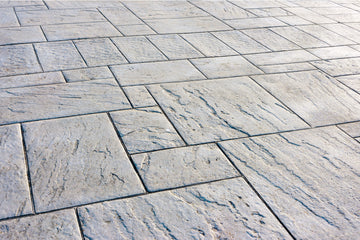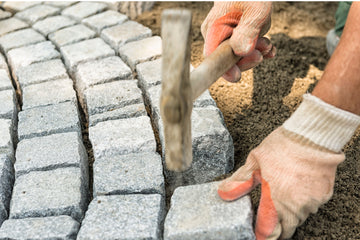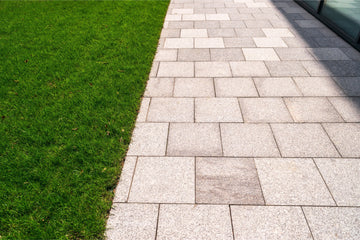What Factors Influence the Lifespan of Marble? A Comprehensive Guide to Natural Stone Durability

In the dynamic world of natural stone commerce, understanding the factors that influence marble's longevity isn't just academic knowledge—it's a crucial business imperative. As global demand for premium natural stone continues to rise, industry professionals must possess a thorough understanding of marble's durability factors to ensure optimal product selection, application, and maintenance. This comprehensive analysis delves deep into the multifaceted elements that determine marble's lifespan, offering valuable insights for industry stakeholders.
The Geological Marvel of Marble Formation
Marble's journey begins in Earth's geological laboratory, where limestone undergoes a remarkable metamorphic transformation. Under intense pressure and temperatures exceeding 750 degrees Celsius, the original sedimentary rock recrystallizes, creating the distinctive crystalline structure that characterizes marble. This process, occurring over millions of years, produces varieties with unique characteristics that influence their durability and application potential.
In the Indian context, particularly in regions like Rajasthan, Madhya Pradesh, and Gujarat, this geological process has created some of the world's most sought-after marble varieties. The unique mineral compositions and structural characteristics of Indian marble, formed under specific geological conditions, contribute significantly to their durability profiles and market value.
Internal Structural Characteristics

The microscopic architecture of marble plays a fundamental role in determining its longevity. During formation, the recrystallization process creates a network of interconnected pores and capillary channels throughout the stone's structure. While these features contribute to marble's distinctive character and aesthetic appeal, they also represent potential vulnerability points that can affect the stone's long-term performance.
The porosity network, typically ranging from 0.5% to 2% in high-quality marble, serves as both a blessing and a challenge. These microscopic spaces allow the stone to "breathe," contributing to its natural beauty and unique character. However, they also provide pathways for potential contaminants, moisture, and chemical agents that can influence the stone's durability over time.
Chemical Composition and Reactivity
The chemical composition of marble represents a complex interplay of minerals that directly impacts its durability. The predominant component, calcium carbonate (CaCO3), typically constitutes over 50% of the stone's composition. However, the presence of other minerals, including magnesium carbonate, manganese oxide, silica, and various trace elements, creates a unique chemical profile for each marble variety.
This chemical complexity influences several aspects of marble's durability:
- Iron Content and Oxidation: The presence of iron compounds, while contributing to beautiful veining patterns, can lead to oxidation when exposed to moisture. This process can result in rust formation and potential staining, particularly in exterior applications or high-humidity environments.
- Acid Sensitivity: The calcium carbonate content makes marble particularly sensitive to acidic substances. Even mild acids can initiate a chemical reaction that may affect the stone's surface integrity over time. This characteristic requires careful consideration in both application planning and maintenance protocols.
- Mineral Stability: The stability of various mineral components under different environmental conditions significantly influences the stone's long-term performance. Some minerals may undergo subtle changes when exposed to specific environmental conditions, potentially affecting the stone's appearance and structural integrity.
Environmental Factors and Their Impact
Environmental conditions represent one of the most significant external influences on marble's lifespan. In the Indian context, where climate variations can be extreme, understanding these factors becomes particularly crucial:
- Temperature Fluctuations: The natural thermal expansion and contraction of marble in response to temperature changes can create internal stresses. In regions experiencing significant temperature variations, this can lead to microscopic changes in the stone's structure over time.
- Humidity and Moisture: High humidity levels can accelerate various deterioration processes. Moisture penetration through the stone's porous structure can facilitate chemical reactions and potentially lead to structural weakening over time.
- Atmospheric Pollution: Urban environments present particular challenges due to air pollutants. Sulfur dioxide, nitrogen oxides, and other atmospheric contaminants can react with marble's surface, potentially leading to chemical alterations and aesthetic degradation.
- UV Exposure: Prolonged exposure to direct sunlight can affect certain mineral components in marble, potentially leading to subtle color changes or surface alterations over time.
Quarrying and Processing Excellence
The methods employed in marble extraction and processing significantly influence its long-term durability. Modern quarrying techniques in India have evolved to prioritize stone quality and structural integrity:
- Extraction Methods: The choice between wire cutting and controlled blasting can affect the stone's internal structure. Modern wire cutting techniques, while more time-consuming, generally result in better structural integrity and fewer microscopic stress points.
- Processing Techniques: The cutting, polishing, and surface treatment processes must be carefully controlled to prevent microscopic damage. Factors such as cutting speed, cooling methods, and polishing pressure all contribute to the final product's durability.
- Quality Control: Rigorous quality control measures during processing help identify and address potential issues before they affect the stone's performance in application.
Installation and Application Considerations
Proper installation represents a critical factor in ensuring marble's longevity:
- Substrate Preparation: The foundation for marble installation must be properly prepared to provide stable, even support and appropriate moisture protection.
- Adhesive Selection: The choice of installation materials, particularly adhesives and grouts, must be compatible with marble's chemical composition and intended application.
- Joint Design: Proper expansion joints and movement accommodation are essential, particularly in large installations or areas subject to temperature variations.
- Waterproofing: In exterior applications or moisture-prone areas, appropriate waterproofing measures must be implemented to protect the stone's integrity.
Professional Maintenance Protocols
A well-designed maintenance program significantly influences marble's lifespan:
- Regular Cleaning: Professional cleaning protocols using pH-neutral cleaners help prevent accumulation of contaminants that could affect the stone's surface.
- Sealing Requirements: Periodic application of appropriate sealers helps protect against staining and moisture penetration while maintaining the stone's natural beauty.
- Preventive Measures: Implementation of preventive measures, such as moisture barriers and proper drainage systems, helps protect against potential damage sources.
Quality Standards and Industry Compliance
The Indian stone industry adheres to stringent quality standards that help ensure consistent product performance:
- Testing Protocols: Regular testing of physical properties, including compressive strength, water absorption, and flexural strength, helps predict and enhance stone durability.
- International Standards: Compliance with international standards ensures product quality meets global market requirements.
- Certification Programs: Various certification programs help verify product quality and processing standards.
Emerging Technologies and Future Trends
The natural stone industry continues to evolve with new technologies enhancing marble durability:
- Surface Treatments: Advanced surface treatment technologies offer improved protection against various forms of degradation.
- Monitoring Systems: Modern monitoring techniques help track stone performance and identify potential issues before they become significant problems.
- Sustainable Practices: Growing emphasis on sustainable quarrying and processing practices influences both product quality and environmental impact.
Understanding and managing the factors that influence marble's lifespan requires a comprehensive approach that considers both internal and external factors. By carefully evaluating these elements and implementing appropriate measures throughout the stone's lifecycle, industry professionals can ensure optimal performance and longevity of this remarkable natural material. This knowledge not only enhances product quality but also contributes to customer satisfaction and business success in the competitive natural stone market.







